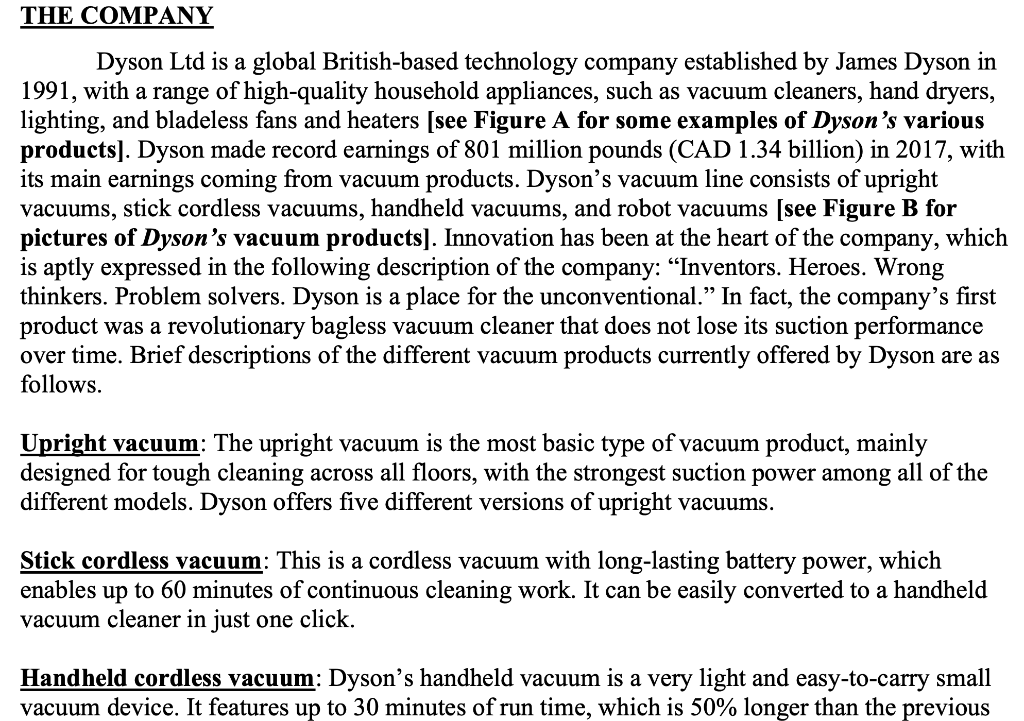THE COMPANY Dyson Ltd is a global British-based technology company established by J ames Dyson in 1991, with a range of highquality household appliances, such as vacuum cleaners, hand dryers, lighting, and bladeless fans and heaters [see Figure A for some examples of Dyson 's various products]. Dyson made record earnings of 801 million pounds (CAD 1.34 billion) in 2017, with its main earnings coming from vacuum products. Dyson's vacuum line consists of upright vacuums, stick cordless vacuums, handheld vacuums, and robot vacuums [see Figure B for pictures of Dyson 's vacuum products]. Innovation has been at the heart of the company, which is aptly expressed in the following description of the company: \"Inventors. Heroes. Wrong thinkers. Problem solvers. Dyson is a place for the unconventional.\" In fact, the company's rst product was a revolutionary bagless vacuum cleaner that does not lose its suction performance over time. Brief descriptions of the different vacuum products currently offered by Dyson are as follows. Upright vacuum: The upright vacuum is the most basic type of vacuum product, mainly designed for tough cleaning across all oors, with the strongest suction power among all of the different models. Dyson offers five different versions of upright vacuums. Stick cordless vacuum: This is a cordless vacuum with long-lasting battery power, which enables up to 60 minutes of continuous cleaning work. It can be easily converted to a handheld vacuum cleaner in just one click. Handheld cordless vacuum: Dyson's handheld vacuum is a very light and easy-to-carry small vacuum device. It features up to 30 minutes of run time, which is 50% longer than the previous version. Many customers use the handheld vacuum to clean their cars or awkward places that cannot be easily reached with heavy or large vacuum products. Robot Vacuum: Dyson's robot vacuum (Dyson 360 Eye) features strong suction, combined with intelligent and systematic navigation of the home enabled by its unique camera function. Also, it offers a mobile application, which enables controlling, scheduling, and tracking the robot vacuum at home or remotely, and an automatic recharging system, which makes the device always ready for the next cleaning. SEGMENT DESCRIPTIONS The following segment characteristics describe the potential segments that Dyson may consider in the marketing of various vacuums. \"Creative Class\": This segment is largely made up of university educated, higher income, semi- professional/professional people. They are mainly singles and couples living in the inner-city urban centers in Canada's major cities (e.g., Toronto, Montreal and Vancouver). They often own their residence, but may rent for lifestyle and investment purposes, and choose to live in the downtown city/urban environment for cafes/cultmal/lifestyle reasons. They have only one car, if they have a car at all. Technology (e.g., smartphones, laptops, tablets, social media, etc.) is an 2) [4 marks] Which of the two segments do you believe would be more attractive to target for the Dyson 360 Eye? Justify your









